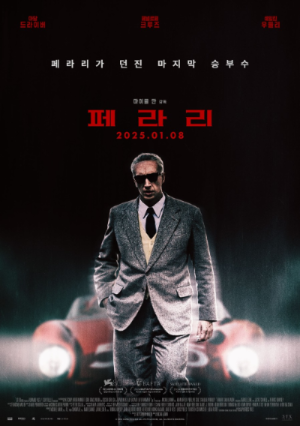
Introduction
The 2025 release of Ferrari, directed by Michael Mann, has generated significant buzz across the cinematic landscape. This film, a biographical drama about Enzo Ferrari and the iconic car manufacturer, promises to captivate audiences with its intense narrative and technical mastery. However, what elevates a film from being a good watch to a box office phenomenon often lies in its sound design. This blog delves into the key elements that make Ferrari a potential box office success, viewed through the lens of a sound director.
1. The Immersive Power of Engine Sounds
One of the most striking features of Ferrari is the authentic recreation of car engine sounds. As a sound director, capturing the visceral roar of Ferrari engines is pivotal. These sounds are not just background noise; they symbolize the heart and soul of the Ferrari legacy. The meticulous recording of vintage Ferrari engines and the seamless blending of real and enhanced audio elements immerse viewers in the high-stakes racing world. This attention to detail resonates with both car enthusiasts and general audiences, creating an auditory spectacle that complements the visual drama. Authenticity in engine sounds also builds emotional engagement. For instance, the tension of a race scene can be amplified through strategic soundscapes—revving engines during critical moments evoke excitement and adrenaline. Such immersive audio experiences often translate to positive word-of-mouth, a crucial factor in box office performance.
2. Emotional Storytelling Through Soundscapes
Beyond the engines, Ferrari excels in crafting emotional soundscapes that align with its dramatic narrative. The rise and fall of Enzo Ferrari’s personal and professional life are accentuated through a layered audio design. For example, soft, melancholic strings underscore moments of loss, while triumphant orchestral crescendos celebrate victories. These choices heighten the emotional depth, allowing audiences to connect with the characters on a profound level. As a sound director, creating dynamic contrasts is essential. By juxtaposing silence with impactful sound cues—like the deafening cheer of a race crowd or the intimate sound of a ticking clock—Ferrari manipulates audience emotions effectively. This auditory storytelling enhances the film’s replay value, a significant factor in sustaining box office momentum.
3. The Role of Surround Sound in Theatrical Appeal
The technical execution of sound design in Ferrari shines in its use of surround sound technology. Modern theaters equipped with Dolby Atmos or similar systems offer an unparalleled immersive experience. For Ferrari, this means audiences feel as if they are part of the race—engulfed by the engines' growl, the screeching tires, and the atmospheric ambiance of racing circuits. Strategic use of spatial audio elevates the cinematic experience, encouraging viewers to choose theater screenings over streaming platforms. From a sound director's perspective, leveraging multi-channel audio ensures that every element, from subtle whispers to roaring engines, resonates powerfully. This draws audiences repeatedly to cinemas, boosting ticket sales and overall box office success.
Conclusion
From the perspective of a sound director, Ferrari (2025) showcases the transformative power of sound design in driving a film’s commercial success. The authentic recreation of Ferrari engine sounds, emotionally resonant soundscapes, and cutting-edge surround sound technology combine to create an unforgettable cinematic experience. These elements not only enhance audience engagement but also ensure that Ferrari stands out in a competitive box office landscape. For filmmakers and sound professionals alike, Ferrari serves as a masterclass in how exceptional sound design can steer a film toward box office glory.